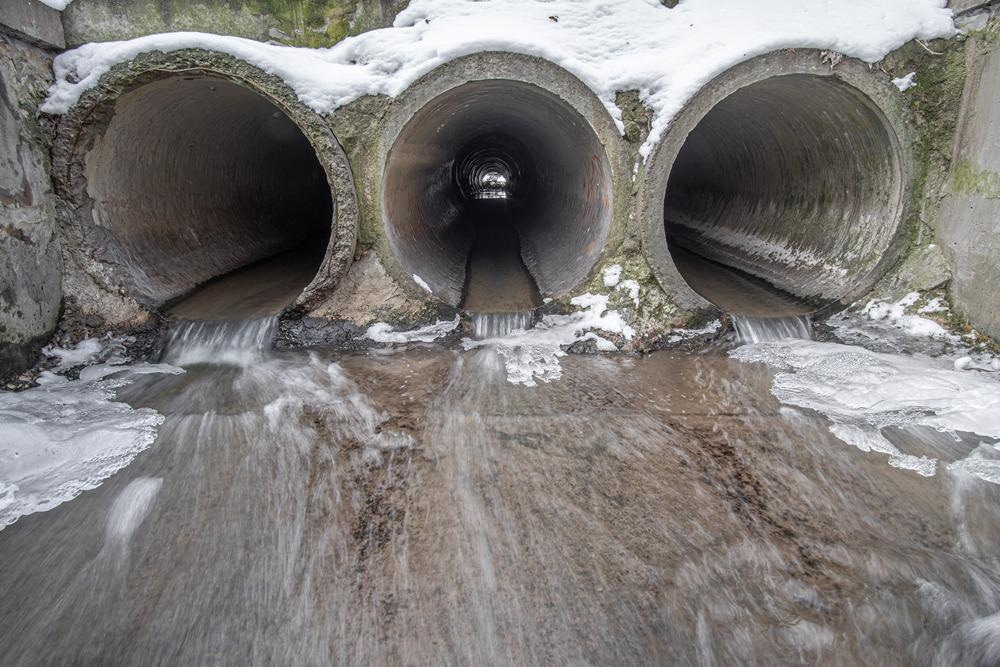 By Surbhi JainReviewed by Susha Cheriyedath, M.Sc.Jun 15 2022
By Surbhi JainReviewed by Susha Cheriyedath, M.Sc.Jun 15 2022In an article recently published in the journal Current Opinion in Green and Sustainable Chemistry, researchers discussed the recent improvements in semiconductor photocatalysts and their utility in wastewater treatment.

Study: Recent advances in wastewater treatment using semiconductor photocatalysts. Image Credit: Dmytro Falkowskyi/Shutterstock.com
Background
Human and environmental health is being jeopardized by toxic organic compounds and metal ions created by anthropogenic sources. While electrochemical technologies for wastewater treatment have made significant progress, the electrical energy necessary for treatment is frequently derived from non-renewable sources, posing a challenge to environmentally friendly and long-term water purification.
Due to direct sunlight coupling, which allows for eco-friendly and mild reaction conditions, coupled with remarkable reactivity for decomposing even trace amounts of pollutants, semiconductor photocatalysts have emerged as a promising emerging approach for water purification and wastewater treatment.
Organic and inorganic pollutants have been proven to be degraded using semiconductor photocatalysts. Methyl orange (MO), methylene blue (MB), and rhodamine B (RhB) have all been studied as model pollutants for photodegradation. Photocatalysts have recently been demonstrated to be capable of dissolving and recovering precious metals from e-waste.
About the Study
In this study, the authors discussed the recent breakthroughs in the use of semiconductor catalysts for wastewater treatment and environmental remediation, as well as innovative techniques that could overcome current constraints.
The team focused on the last two years of pollutant reduction in wastewater utilizing semiconductor photocatalysts. Materials design methodologies for photocatalysts were examined in depth.
The researchers provided a summary of current tactics for the improvement of light absorption and charge separation in semiconductors, as well as pathways for system integration of photocatalysts with other separation and reaction approaches to enable successful wastewater treatment.
Observations
Several studies reported that due to their photocatalytic capabilities, semiconductor materials had a promising potential for wastewater treatment, which could be controlled by the design of the bandgap structure. The formation of reactive species by photogenerated electrons and holes in semiconductor materials provided effective oxidation/reduction performance for the destruction of contaminants, either directly or indirectly.
Dyes, medicines, chemical precursors, and a variety of organic and inorganic waste were treated by photocatalytic degradation. By doping heteroatoms or producing heterojunctions, improvements in functional materials achieved larger light absorption ranges and prolonged charge carrier lifetimes.
Considerable gains and increases in photocatalytic performance were made in the use of semiconductor materials for water filtration. Major research was concentrated on the modification of material features to produce a higher purifying performance which introduced point defects and heterojunction formation and led to improved photocatalytic performance.
The use of these tactics in the photocatalyst sector was shown to be effective in the removal of harmful compounds in water, with both organic and inorganic contaminants eliminated even when exposed to sunlight. However, key limitations and unresolved issues must be overcome before photocatalysts can be commercialized.
The stability and scalability of photocatalysts for practical groundwater and wastewater matrices, as well as establishing a sufficient lifetime to turn the entire photodegradation process economically viable, were significant challenges. Despite the fact that certain photocatalysts could degrade pollutants to near-zero percent under visible light, the technique was still limited to lab-scale research.
Furthermore, because most researched photocatalysts featured nanostructures, more thorough stability studies should be done rather than just a few cycles. More than 50 cycles in various pH solutions would adequately illustrate the materials' potential in real-world wastewater applications.
Many additional species present in the solutions could negatively affect photocatalytic capabilities; hence, studying the effect of interfering species in real wastewater was crucial. The usage of synthetic or real water matrices with these interfering species could assist in de-risk their deployment for practical wastewater applications because wastewater had a range of species in excess of the target molecules. Inorganic ions such as CO32-, SO42-, Cl-, PO43-, and Cu2+, for example, could be harmful to photocatalytic activity. Therefore, the validation of photocatalytic activity was crucial for translation to the real-world applications in industrial and groundwater effluent.
Furthermore, the presence of other photocatalytically active pollutants could influence the degradation behavior of the target molecules, so conducting research in the presence of other photodegradable species was vital. In this scenario, combining electrochemically driven advanced separations with interfering species neutralization could be a viable option. The isolation and concentration of the target molecules from competing molecules could improve the selectivity of photocatalysts. Several redox-active materials were identified and used to selectively adsorb ionic species based on the redox state of the functional groups in polymers.
When non-selective photocatalysts were combined with selective redox electrodes, specific pollutant degradation could be achieved. Capacitive deionization electrodes could be linked to improving overall performance. Because of its hydrophilic character and intercalation-based pseudocapacitive nature, MXene, layer structured metal carbides, carbonitrides, or nitrides would increase the overall efficiency of water treatment systems.
Conclusions
In conclusion, this study elucidated that electrochemistry-based separation systems could be combined with photoelectrochemical (PEC) pollutant degradation to enable long-term process intensification. Electrochemistry could enhance charge separation by drawing photogenerated electrons from the photocatalyst to the electrical circuit via anodic potential, while the electrode could also contribute to the generation of reactive radicals.
The authors mentioned that PEC could lead to the use of less effective but more environmentally acceptable semiconductors, bringing us closer to green chemistry. They believe that combining photocatalyst and electrochemical systems in the future offers a unique chance to bring innovation to wastewater treatment.
More from AZoM: What is Glow Discharge Optical Emission Spectrometry
Disclaimer: The views expressed here are those of the author expressed in their private capacity and do not necessarily represent the views of AZoM.com Limited T/A AZoNetwork the owner and operator of this website. This disclaimer forms part of the Terms and conditions of use of this website.
Source:
Hong, J., Cho, K-H., Presser, V., et al. Recent advances in wastewater treatment using semiconductor photocatalysts. Current Opinion in Green and Sustainable Chemistry 100644 (2022). https://www.sciencedirect.com/science/article/abs/pii/S2452223622000566